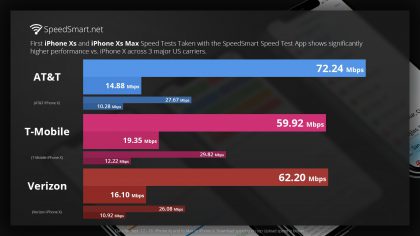Glenn Marston:
When Apple’s website reappeared after shutdown for the company’s Sept. 12 product event, it displayed a list of the new X-Series iPhones.
Eliminated from Apple availability were the regular- and large-size iPhone 6 and iPhone 6s, which had been introduced in September 2014 and September 2015.
Also missing was a unique small phone, the iPhone SE. Based on the body of 2012’s iPhone 5, it had been the only remnant of the compact early iPhones.
And:
One should not assume that Apple has sworn off small phones. They are favorites of smaller folks, plus a segment of women that eschews the grand purse and those of both genders who prefer to travel light with clothes trailered tight.
Apple might have intended no inference other than limiting new iPhones to those in the minimal-bezel, Face ID form of the X series.
With that in mind, Apple should produce an iPhone XR Mini as a follow-on to the iPhone SE.
I’ve been thinking about the loss of iPhone SE form factor. Is Apple undervaluing people with small hands, and small wrists? The Apple Watch is getting larger (thinner, but longer/wider), even though there are plenty of people who wish for a smaller case size.
And, as Glenn points out, Apple has eliminated the last vestige of the smaller iPhone form factor, the iPhone SE. Is this the end of the line for the SE? Or is this, possibly, a supply chain issue?
Apple has unified their iPhone line in a number of ways. All the new phones (XS, XS Max, XR) use Face ID and have the corresponding notch and lack of a home button. And all the new phones are based on Apple’s 7nm A12 Bionic chip.
The XS and XS Max went on sale in Apple Stores this morning (8a, your local time). But, likely due to supply chain constraints, the iPhone XR will not be available for pre-order until early morning October 19th (12:01 am PT).
No complaints there, this is smart product rollout. But could those limitations have informed Apple’s decision not to release an iPhone X with the smaller iPhone SE form factor?
Could this also be an engineering issue? The notch is a relatively fixed size. Could fitting the Face ID hardware, etc. (the notch assembly) in the smaller iPhone SE footprint be problematic? Could that be the reason Apple has not announced an iPhone X updated SE, or, as Glenn put it, an iPhone XR Mini?
Seems to me, Apple is proceeding logically here. The first steps were to unify the product line and ramp up production of the 7nm A12 Bionic chip, to ensure that the iPhones XS, XS Max, and XR are all available to customers who want them.
Once those needs are met, and if they can solve the engineering problems (problems being speculation on my part) of fitting the notch contents in a much smaller package, might we see an iPhone X version of the SE? I really hope so. I’ve got a whole family of iPhone users who prefer that smaller footprint.

